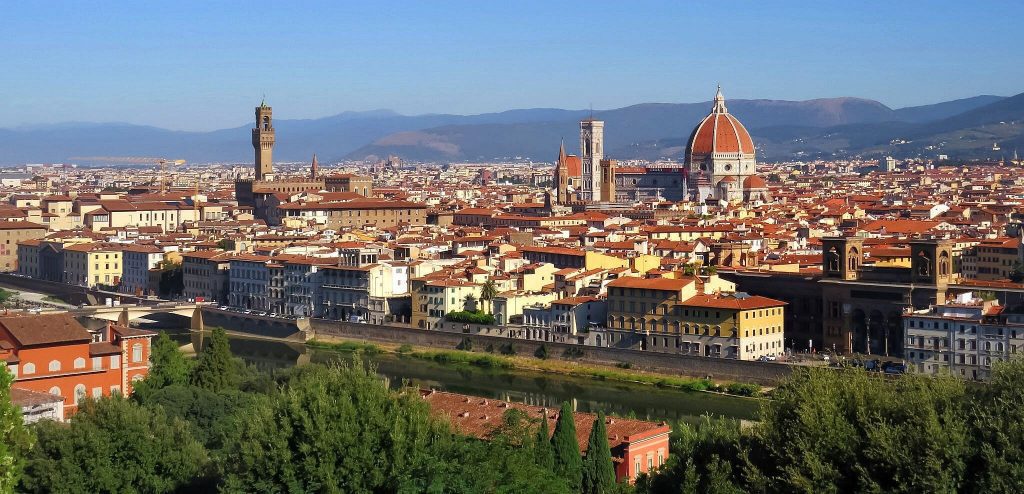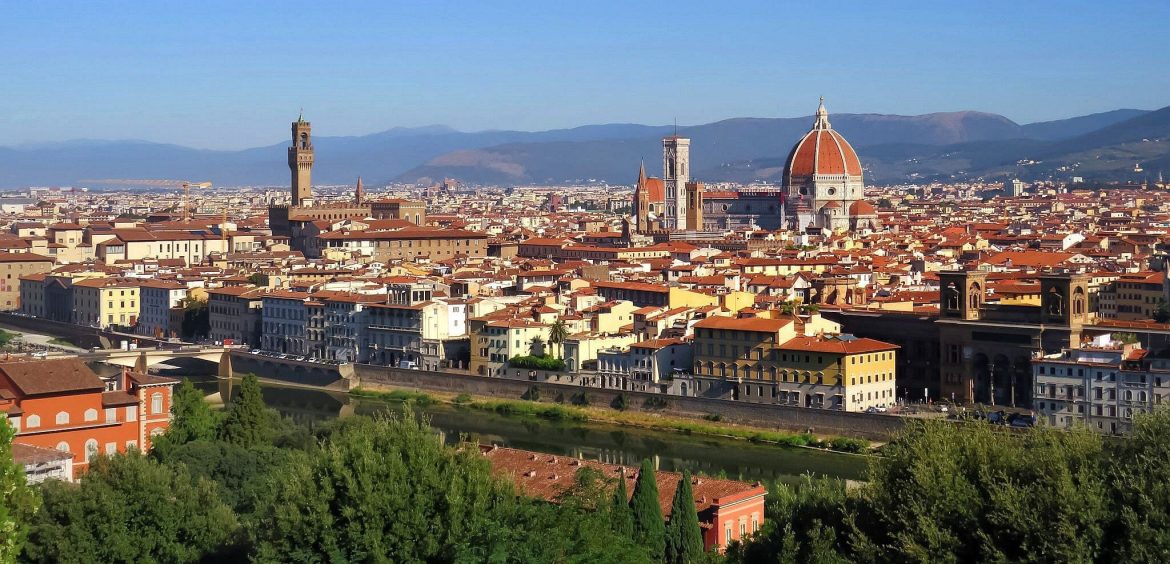By Betty Beers
If you’re passionate about developing or enhancing your artistic skills, the Florence Academy of Art (FAA) is the perfect destination for you. Unlike traditional art schools that focus on formulaic styles or animation, FAA offers a unique approach. It delves into the processes employed by the Old Masters, providing students with a comprehensive classical education that encompasses humanities, art history, anatomy, ecorche, composition, and perspective. The academy’s founder, Daniel Graves, emphasizes the academy’s commitment to inspiring and encouraging individuals, regardless of their talent level, fostering individuality and original thought. Graves distinguishes between the realistic art of the Old Masters, which the academy teaches, and Post-Contemporary art, which it does not.
FAA’s journey began in 1991 with a modest beginning, comprising only a few students and a studio nestled in the gardens of a Florentine palace. Over the years, it has grown into a remarkable institution, expanding into a 35,000 square foot school with thirty north-lit classrooms, a gallery, library, café, private studios for faculty, and apartments for visiting artists. The academy’s reach extends beyond its Italian roots, with a branch campus in Molndal, Sweden.
Florence offers a one-year foundation course in Graphic Arts which includes figure and cast drawing, portrait, anatomy, and art history, using the mediums of oil, charcoal, sanguine, ink and etching. There are guided museum visits in order to understand the city as an extended classroom. There is an intent to develop individual intuition in all courses.
After successful completion of the one-year course, a student may apply for the three-year certificate course. Spaces are limited, and entry is not guaranteed. There is an online application which requires the submission of five sample drawings, paintings or sculpture, preferably in the mediums used by the FAA. Requirements are a high school degree and competency in English language.
The academic year runs from the end of September through mid-June. The weekly schedule is 9-4 Monday through Friday, with Thursday reserved for individual study. Evening classes in anatomy or art history are held on Monday (anatomy) at 5:00 and Friday (art history) at 5:30.

Workshops: Workshops occur year-round and are generally four to five weeks long, with some being only two weeks. Some of the offerings are: Intensive drawing, painting and art history, Part I, Part II • Ecorche sculpture • Figurative sculpture • Academic figure drawing • Landscape • Painting the figure in oil • Portraiture techniques and traditions • Still life • Academic figure painting and portraiture • Figure painting • Marble carving • Sculpting the portrait from life
TECHNIQUES
Working from Life: The Florence Academy of Art offers unique opportunity to work from life. The advantage of working from life is the chance to study human proportion body type, gesture and important anatomical points, by studying outline and shadow using a pencil, then studying mass, light and atmosphere using charcoal and oil paint.
Sight/Size versus Ideal Proportions: The ancient Greeks and Romans had specific ideas about ideal proportions in relation to the concept of beauty. They believed that there should be a harmonious and pleasing relationship between different parts of an object or body and that this created a balanced and appealing physique. For instance, the Greek ideal of the male physique was based on a V-shaped torso with broad shoulders, a narrow waist, and balanced muscle development. These proportions are often based on mathematical ratios like the Golden Ratio (1:1.618). In drawing the figure, the head size was the unit of measure. Thus, from top of head to waist, for instance, was 3 heads and from top of head to knee bend was 6 heads.
Polyclitus wrote an extensive canon of proportions with precise rules, with the goal of creating perfection or a divine ideal. Leonardo’s Vitruvian Man, with which we are all aware, illustrates the ideal human proportions based on the writing of the Roman architect, Vitruvius.
But artists have long realized that humans are not perfect, and during the Renaissance, with its emphasis on individuality, other systems for drawing accurately began to be developed, including grids (as originated and illustrated by Durer from 1525),* and vertical plumb lines, described by Abraham Bosse, Practical Geometry and Perspective 1665.* Even Leonardo recommended tracing your subject onto a superimposed piece of glass: “Take a glass as large as your paper, fasten it well between your eye and the object you mean to draw, and fixing your head in a frame (in such a manner as not to be able to move it) at the distance of two feet from the glass; shut one eye and draw with a pencil accurately upon the glass all that you see through it. After that, trace upon paper what you have drawn on the glass, which tracing you may paint at pleasure, observing the Aerial perspective.”*
All these systems can be cumbersome and can remove the life from your drawn line. Also, they don’t take into account the individual eccentricities of each person. The sight/size method if drawing rejects the ideal and celebrates the individual.
The elements of sight/size system that is used today at the FAA is consistent with a sitter’s description of a portrait session by artist Henry Raeburn. Often the canvas is placed near the subject and then the artist steps back (Leonardo recommended three times the length of the subject), studies the sitter against the canvas for a minute of more, then the artist comes to the canvas and without looking at the sitter paints from memory for a minute or more. Then the process is repeated: “When he saw all was right, he took his palette and his brush, retreated back step by step, with his face towards me, till he was nigh the other end of the room; he stood and studied for a minute more, then came up to the canvas, and without looking at me, wrought upon it with colour for some time. Having done this, he retreated in the same manner, studied my looks at that distance for about another minute, then came hastily up to the canvas and painted a few minutes more”*
Individual Insight: Since the Florence Academy teaches students to develop their own style and themes, one wonders whether they will paint in the world of the Old Masters, or whether they will be able to incorporate the artistic discoveries of later eras. Rembrandt for instance used primarily four colors, lead white, bone black, lead-tin yellow and ochre. They were all earth pigments. He sparingly used vermilion red (ground cinnabar), smalt and azurite, (which were blues), and he was renowned for his glazing that added texture and depth. His painting subjects were often biblical and were set indoors.
If in developing individual insight a student wanted to add ingredients from later eras, one would consider the Impressionists who added color through chemistry: cadmium yellows, oranges and reds, thalo blue and green, cerulean blue, cobalt blue and French ultramarine blue. Impressionists also developed the ideas around color temperature and atmospheres, which came with plein aire painting. Expressionism emphasized subjective emotions and inner experiences, often through distortion, rather than objective reality. So, for instance, for today’s portrait student who wants to create an individual brand consistent with the teachings at the Florence Academy of Art, it could be a challenge to add richness in today’s clothing that often avoids formality, texture and shine. It would be interesting to a student of art history to see how those ideas become updated and still consistent. It will be interesting to see whether the individual Florence Academy of Art students either remain in the Old World of painting or whether they will also incorporate some of the ideas of the Impressionists, Expressionists, or Modernists. The future will tell us.
*excerpts from The History of Sight-Size by Darren Rousar
Image: Florence – Panorama of the historic center. Source: Wikimedia, Anna.Massini


